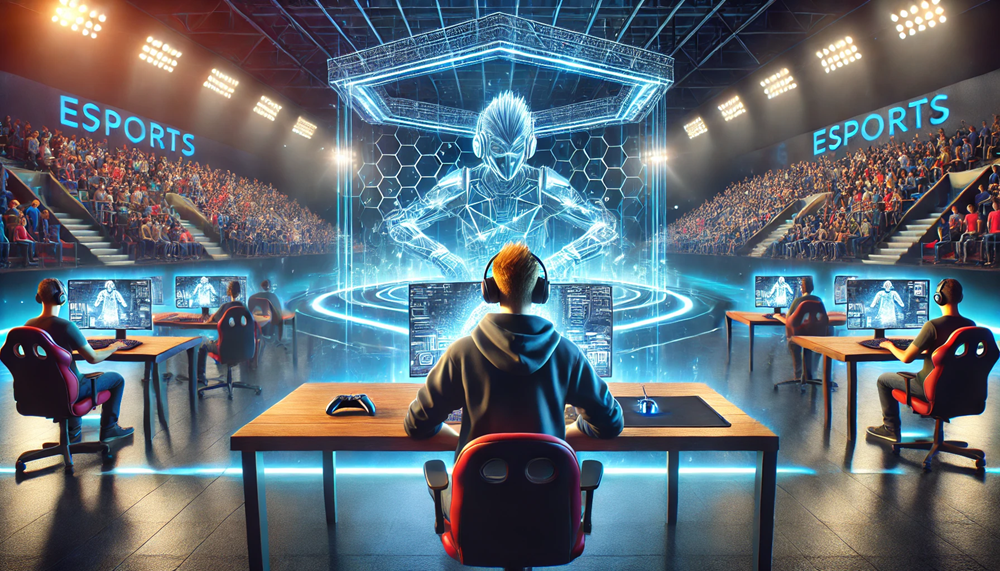In the past decade, eSports has transformed from a niche hobby into a global phenomenon, with millions of fans, professional leagues, and lucrative tournaments. Technology has played a pivotal role in this meteoric rise, creating new competitive arenas and redefining the concept of modern sports. From advanced gaming hardware to immersive streaming platforms, eSports continues to push boundaries, setting the stage for its bright future.
What Are eSports?
eSports, or electronic sports, refer to competitive video gaming where individuals or teams face off in various games, ranging from first-person shooters (FPS) to strategy and sports simulations. Unlike traditional sports, eSports take place in virtual arenas but require the same levels of skill, strategy, and teamwork.
Key Characteristics of eSports
- Professional Teams and Leagues: Organizations sponsor players and teams for global competitions.
- Diverse Game Genres: Popular titles include League of Legends, Counter-Strike: Global Offensive, and FIFA.
- Massive Fan Engagement: Millions tune in to watch live matches and tournaments online.
How Technology is Powering the Growth of eSports
High-Performance Gaming Hardware
Advanced gaming PCs, consoles, and peripherals enable smooth gameplay with high resolutions, faster frame rates, and low latency. These advancements ensure an optimal competitive environment for players.
High-Speed Internet and 5G Connectivity
Reliable, high-speed internet has been a game-changer for eSports. The rollout of 5G has further enhanced online gaming by:
- Reducing lag and latency during matches.
- Enabling cloud gaming, allowing players to access high-quality games on various devices.
Streaming Platforms
Platforms like Twitch, YouTube Gaming, and Facebook Gaming have revolutionized how fans consume eSports content. Features such as live chats, subscription models, and interactive overlays keep fans engaged in real time.
Virtual Reality and Augmented Reality
VR and AR technologies are opening new dimensions in eSports by creating immersive gaming experiences and virtual tournaments. Players can now compete in environments that simulate physical presence and interaction.
The Competitive Landscape of eSports
eSports competitions are structured similarly to traditional sports, with leagues, tournaments, and governing bodies overseeing events.
Major Tournaments and Events
- The International: Known as the pinnacle of Dota 2 competition, with prize pools exceeding $40 million.
- League of Legends World Championship: A global spectacle that attracts millions of viewers.
- Fortnite World Cup: A fan-favorite event showcasing individual and team-based gameplay.
Professional eSports Teams
Teams like Fnatic, Team Liquid, and Cloud9 have established themselves as global brands, securing sponsorships, merchandise deals, and loyal fan bases.
College and Amateur Leagues
eSports is gaining traction in educational institutions, with scholarships and amateur leagues providing pathways for young players to enter the professional scene.
The Role of Data Analytics in eSports
Data analytics is becoming a cornerstone of eSports, helping teams and players optimize performance and strategize effectively.
Performance Insights
- Analytics tools track player movements, reaction times, and in-game decisions.
- Coaches and analysts use this data to refine strategies and identify weaknesses.
Fan Engagement
- Data-driven platforms enhance the spectator experience by providing real-time stats, heatmaps, and play-by-play breakdowns.
Monetization and Economic Impact
eSports has evolved into a billion-dollar industry, with multiple revenue streams driving its growth.
Sponsorships and Advertising
Brands like Intel, Coca-Cola, and Red Bull invest heavily in eSports sponsorships to reach younger, tech-savvy audiences.
Prize Pools
Tournaments offer substantial payouts, with many professional players earning significant incomes through winnings and sponsorship deals.
Merchandising and Licensing
Teams and tournaments generate revenue by selling branded merchandise and licensing their content for games, movies, and other media.
Challenges Facing eSports
Despite its success, eSports faces some challenges that must be addressed for sustained growth.
Cheating and Integrity Issues
The use of cheats and hacks undermines fair play, necessitating robust anti-cheating technologies.
Burnout and Health Concerns
Long hours of practice and competition can lead to physical and mental health issues for players.
Regulatory Concerns
The lack of unified global governance poses challenges in managing player contracts, prize disputes, and game rules.
The Future of eSports
The future of eSports looks promising, with emerging technologies and expanding audiences shaping its trajectory.
Cross-Reality Gaming
The integration of AR and VR will create hybrid gaming environments, merging physical and virtual elements.
Blockchain and NFTs
Blockchain technology will enable secure transactions, while NFTs could introduce unique collectibles, virtual assets, and exclusive fan experiences.
Global Reach
As accessibility improves in emerging markets, eSports will see explosive growth in regions like Asia, Africa, and South America.
Conclusion
eSports is redefining the world of competitive sports, fueled by technological advancements that enhance gameplay, viewership, and engagement. As it continues to evolve, eSports will undoubtedly cement its place as a dominant force in entertainment and sports. With its unique blend of technology, competition, and community, eSports is not just a game—it’s a revolution.
